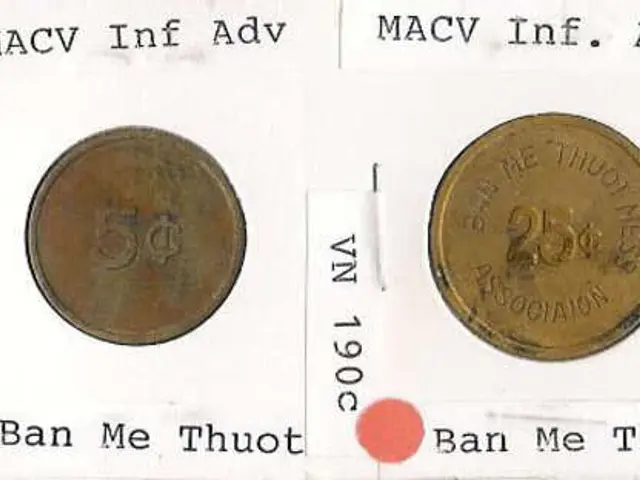Trade tariffs imposed by Trump spark currency instability in India's rupee and stock market, casting doubt on India's economic growth outlook.
The announcement of 25% tariffs on Indian goods by the U.S. President, Donald Trump, starting August 2025, is likely to have a significant impact on India's economic growth, equity markets, and the Indian rupee (INR) against the US dollar in 2025-26.
Impact on India's Economic Growth
The tariff rise will increase costs for Indian exporters to the US, reducing their competitiveness and export revenues. This could lead to slower economic growth as exports constitute a significant part of India’s GDP. The tariffs are also related to India's purchases of Russian oil and military equipment, further complicating trade relations amid global geopolitical tensions, which may deter investment and trade confidence. India’s government has indicated it will take steps to protect its interests, but retaliatory measures or trade disruptions could further undermine growth momentum.
Impact on Indian Equity Markets (Nifty 50 and BSE Sensex)
Stock markets like the Nifty 50 and BSE Sensex are likely to face downward pressure due to the anticipated slowdown in export-driven sectors and increased uncertainty in the trade environment. Investors often react negatively to increased tariffs and geopolitical tensions, anticipating lower corporate earnings and economic disruptions. The overall sentiment in 2025-26 may remain cautious, potentially limiting gains or triggering declines in market indices.
Impact on the Indian Rupee (INR)
The Indian rupee has already shown weakness against the US dollar following the tariff announcement, trading near 88.80 INR/USD. Increased tariffs typically worsen the trade balance and foreign investor sentiment, leading to further depreciation pressures on the rupee.
Additional Context
The US decision stems from India’s continued purchase of Russian oil and military equipment despite Western sanctions, which adds a geopolitical dimension overshadowing pure economic considerations. While the tariffs primarily affect India, they could also impact US consumers and businesses due to higher prices on Indian imports. The Federal Reserve’s monetary policy stance around the same period adds complexity to currency and market movements but does not offset tariff effects fully.
In summary, India’s economic growth is expected to slow moderately due to reduced export competitiveness, the Nifty 50 and BSE Sensex may face volatility and downward pressure, and the rupee is likely to weaken further against the dollar in 2025-26 due to trade and geopolitical uncertainties triggered by the US 25% tariff on Indian goods.
[1] Raphael Luescher, Co-Head of EM equities at Vontobel, suggests that these tariffs could undermine India's appeal to businesses in low-value-added manufacturing sectors. [2] Santanu Sengupta, a Goldman Sachs economist, estimated a 30-bps hit to growth once the tariffs are imposed. [3] Alison Shimada, head of Total Emerging Markets Equity at Allspring Global Investments, suggests that India could consider increasing imports from the U.S. to ease tensions with the U.S. [4] DBS Bank believes downside risks will be offset by fiscal support for labor-intensive industries and smaller exporting firms, alongside further rate cuts. However, they also highlight that the economy will continue to benefit from trade diversion flows as manufacturers diversify and derisk from other production bases, including China. DBS economists also note that the rupee is close to its record low of 87.95, hit in February. Shimada predicts that the stock market may react negatively in the short term as the INR is depreciating on the back of this news, but adds that fundamentals will remain a key focus since India's earnings season is ongoing. Brad Bechtel, head of global FX at Jefferies, stated that 88.00 could be a significant level for the rupee. Elevated policy uncertainty in the U.S. might cause Indian firms to postpone investment decisions. If the tariffs remain, they could harm India's manufacturing ambitions and growth. The Indian government expects the economy to grow at 6.3%-6.8% in 2025-26. Shimada notes that India wishes to maintain constructive trade relations with both Russia and the U.S.
- The tariff increase on Indian goods could potentially deter businesses in low-value-added manufacturing sectors from viewing India as an attractive destination, given the increased costs and uncertainties in the business environment.
- The ongoing geopolitical tensions between India and the U.S., fueled by trade restrictions, could potentially lead to a negative reaction in the Indian stock market, as fundamentals remain a key focus during the ongoing earnings season.




